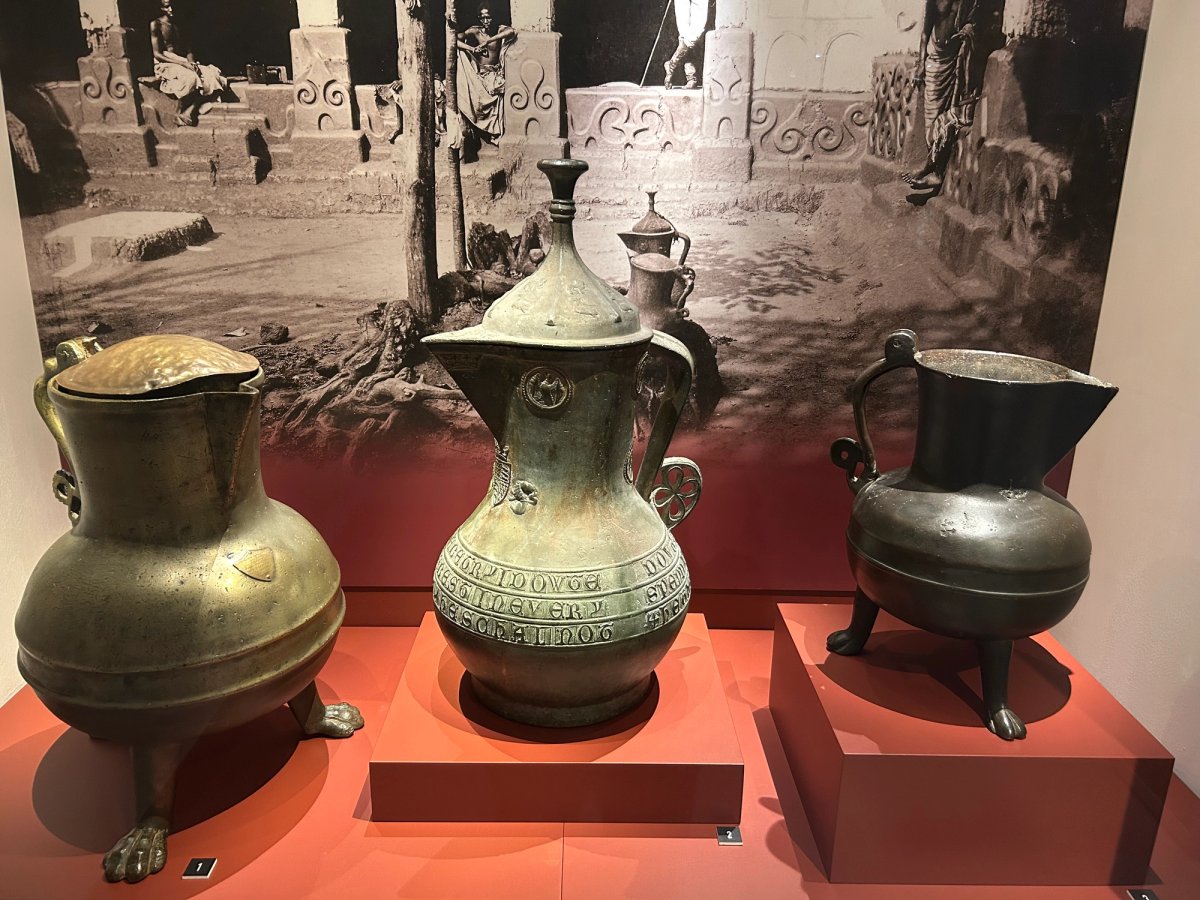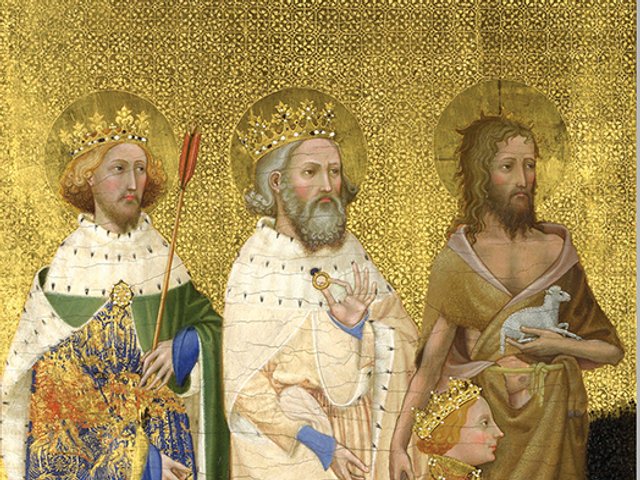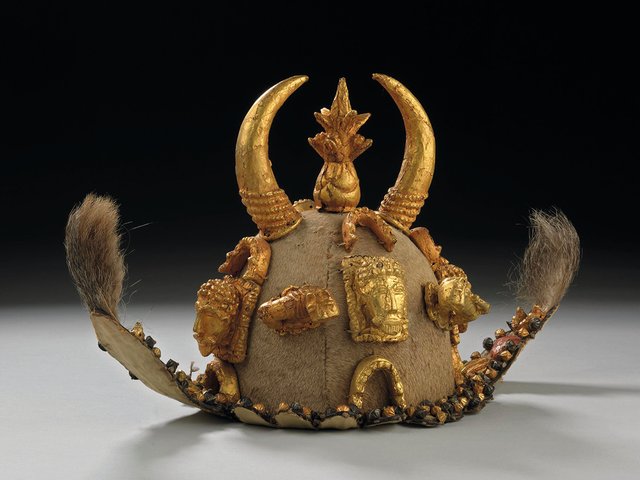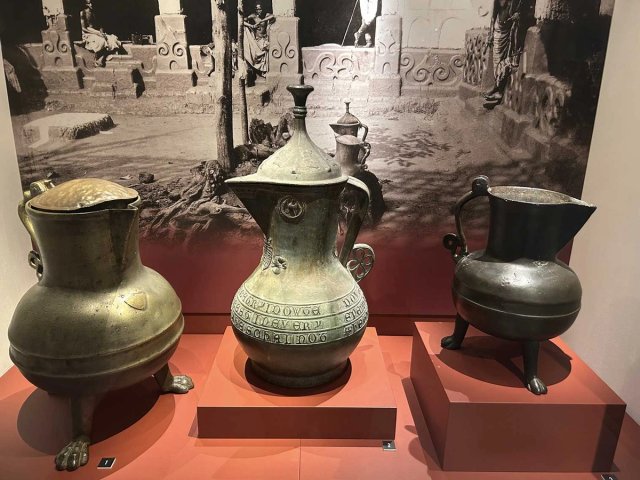The Asante Ewer is one of the most intriguing objects in the British Museum. Made in England in the 1300s, it was transported to Africa, where it was either carried by camel across the Sahara or taken on an early sea voyage around the west coast, eventually ending up in the Asante kingdom. In 1896 it was looted by British troops, along with two smaller ewers (one was taken in 1900), and returned to England.
The three metal ewers (jugs) have been brought together and go on display today (24 October) at York Army Museum (until 21 February). The display is accompanied by other items seized by the Prince of Wales’s Own Regiment of West Yorkshire during the Anglo-Asante Wars, including a royal chair and sword.
The ewers will then be shown, likely with a different set of objects, at the British Museum (5 March-7 July 2026). Accompanying the displays is an “object in focus” book by the curators.
The 62cm-high Asante Ewer is the largest surviving bronze vessel made in medieval England. Holding 19 litres, it may well have been made for serving wine at a grand feast, although it would probably have required two people to lift it.
The British Museum dates the ewer to 1340-1405. It bears the royal coat of arms and may have been made for Richard II.
How the ewer reached the Asante kingdom (in present-day Ghana) remains a mystery, despite the recent research. The two curators have slightly different views, although both stress that this is speculation.
Lloyd de Beer believes it more likely that the ewer was taken by sea around the West African coast, possibly by a Portuguese or Dutch trading ship. Julie Hudson leans towards the theory that it was carried across the Sahara by a camel caravan. But neither rule out the other option.

The Asante Ewer
Trustees of the British Museum
It also remains unknown why the ewer was sent to the kingdom or when the journey occurred, although it may well have been soon after the object was made—in the 14th or 15th century.
All that is certain is that the Asante Ewer was in a royal palace in Kumasi in 1884, when it was photographed in a courtyard by Frederick Grant. It was seized by British troops in 1896, during extensive looting in the fourth Anglo-Asante war. The ewer was bought later that year by the British Museum for £50.
An uncertain connection
Adding to the mystery are two smaller 15th-century ewers that were also looted in Kumasi. They are believed to have been made in England, however they could have come from the Netherlands or Germany.
One also ended up in the British Museum—acquired in 1933 from an officer who had served during the fifth Anglo-Asante War. The third ewer had been acquired by another officer during the 1896 war and was later donated to the Prince of Wales’s Own Regiment of West Yorkshire by the governor of the Gold Coast. It is now held at York Army Museum.
The York ewer was photographed twice at an early stage, in very different circumstances. It appears next to the Asante Ewer in Grant’s 1884 photograph of the royal courtyard, where both objects appear to have served a ceremonial function.
The ewer then reappears in an 1896 photograph of Asante War trophies, shown alongside weapons and several skulls. The image, which is described in the British Museum’s book The Asante Ewer as a “grotesque”, was taken by a commercial photographer in Dover, UK.
The curators conclude: “When the ewers were removed from the courtyard by the British military, their ritual significance was deactivated and replaced with a new narrative—in the case of the York jug as a spoil of war in the regimental mess, and for the Asante Ewer as a rare surviving English medieval vessel displayed in the British Museum”.
It is possible that the three ewers will be lent to the royal museum in Kumasi in the next year or so, before going back on display at the British Museum and the York Army Museum.






